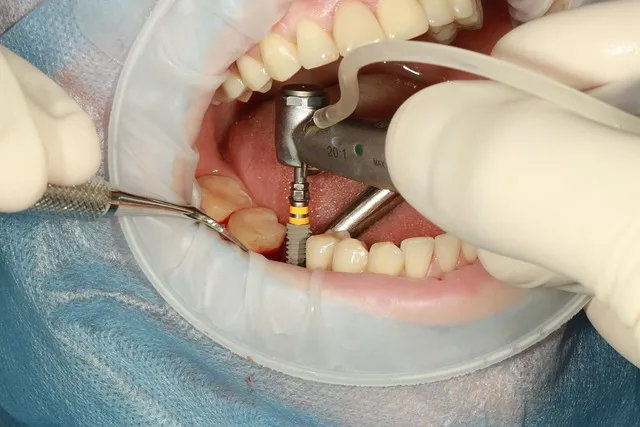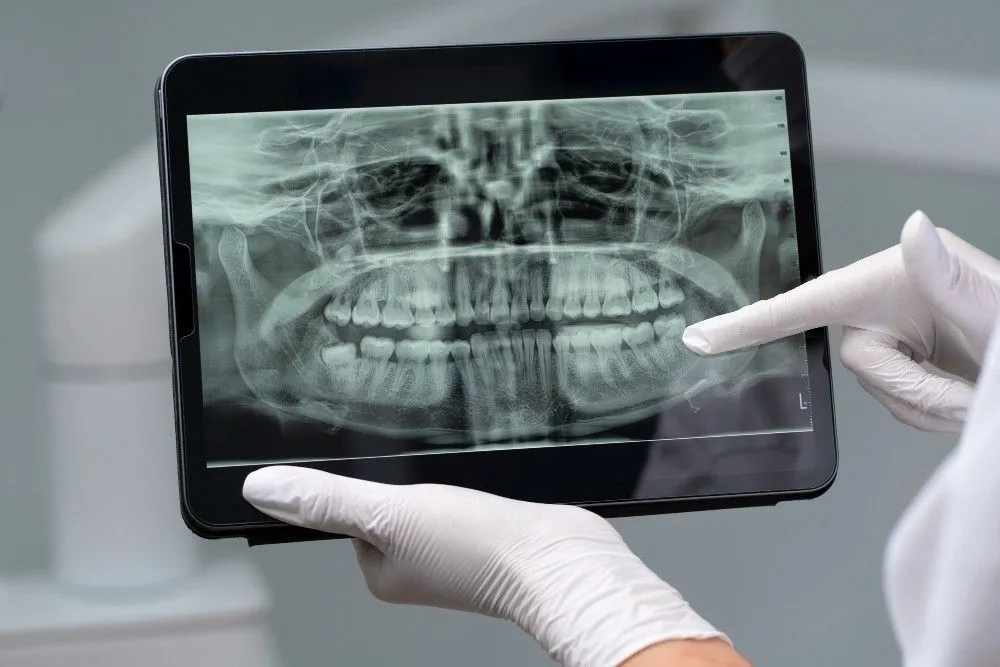Popping a gum abscess won’t kill you instantly, but infection can spread if untreated. Proper dental care stops swelling, pain, and serious complications. Always see a dentist immediately. |
That throbbing pain in your gum can be hard to ignore; swelling, pressure, and even a foul taste often leave people desperate for quick relief. In such moments, the thought might cross your mind: Can popping a gum abscess kill you?
A gum abscess is a serious infection, and trying to drain it yourself can let bacteria spread beyond your mouth. In severe cases, this can travel into the bloodstream and cause dangerous complications.
Let’s break down what really happens when a gum abscess pops, why you should never try to handle it on your own, and the safest steps to take for lasting relief.
Can Popping a Gum Abscess Kill You?
No, popping a gum abscess does not kill you. A gum abscess is not just pain; it's an infection sealed in a swollen pocket. Squeezing it might give short relief, but danger lurks beneath.
Bacteria can move into your bloodstream.
Infection can spread to deeper tissues.
In rare untreated cases, it can progress to sepsis.
Ignoring treatment if you have a gum abscess can bring serious complications. Around 1 in 2,600 people in the U.S. require hospitalization due to dental infections each year. That’s not a small number when you consider how preventable most of these cases are.
What Happens If You Pop a Gum Abscess?
It might feel good for a minute. Pressure goes away, pain lessens, and pus drains out. But the real infection stays hidden inside.
1. Infection Spreads Further
The pus carries bacteria. When you press the abscess, germs push deeper into the gum or bone. Soon, swelling returns stronger.
2. New Germs Enter
Home tools are not sterile. A needle or nail introduces new microbes. The wound opens, making healing harder.
3. Oral Infection Beyond the Gum
Once bacteria reach deeper tissues, they may travel to the jaw or bloodstream. This is how serious gum abscess dangers begin.
4. Tooth Abscess vs Gum Abscess
A tooth abscess starts inside the tooth. A gum abscess starts beside it. Draining the wrong one at home can damage both.
5. Bigger Complications
Ignore treatment long enough, and the infection may spread to the brain or heart. Rare, but documented. Sepsis from gum infection is not an exaggeration. It’s a reality doctors see when cases are left alone.
Untreated cavities: Decay allows bacteria to spread to the root.
Gum disease: Inflamed gums create deep pockets where bacteria thrive.
Injury or trauma: Cracked teeth or gum damage can let bacteria in.
Food trapped between teeth: Bacteria feed on debris and cause infection.
Once the infection starts, your body forms pus to contain it. The result? Throbbing pain, swelling, and a tender lump on your gums.
A professional should always drain an abscess. Dentists use sterilized tools and prescribe antibiotics to stop the infection from spreading.
Safe Alternatives to Popping at Home
You can calm symptoms, but don’t mistake these for cures. They help until you sit in the dentist’s chair.
1. Warm Saltwater Rinse
Mix warm water and salt. Swish it gently. It soothes sore gums and lowers bacteria for a short while.
2. Cold Compress
A chilled pack outside the cheek numbs the ache and cuts swelling. It won’t cure the infection, but it buys comfort.
3. Over-the-Counter Pain Relief
Ibuprofen or acetaminophen reduces throbbing pain. Still, these pills mask the issue. They don’t treat the cause.
These are safe alternatives to popping a gum abscess at home. Relief is temporary, not permanent.
Home Remedy | What It Helps | What It Misses |
Salt rinse | Soothes pain, lowers bacteria | Doesn’t clear the infection |
Cold compress | Reduces swelling | No lasting effect |
OTC pain relief | Eases discomfort | Masks real problem |
How a Dentist Safely Treats a Gum Abscess
A dentist doesn’t just drain the abscess. They stop the infection and protect the surrounding teeth.
Dentists may perform:
A sterile cut to drain pus.
Root canal or extraction if needed.
Antibiotics to control infection.
Guidance for proper healing and follow-up care.
Waiting only makes gum abscess dangers worse. Quick action means faster relief and fewer risks of long-term problems.
Treatment Step | What Happens? |
Draining the abscess | A small incision is made to remove pus. |
Deep cleaning | The area is cleaned to remove bacteria. |
Antibiotics | Given if the infection is spreading. |
Root canal (if needed) | Removes infected tooth pulp. |
Tooth extraction (last option) | Done if the tooth cannot be saved. |
A professional ensures that all bacteria are removed. This prevents the infection from coming back.
Warning Signs a Gum Abscess Is Dangerous
Some abscesses remain small. Others take a sharp turn toward danger. Look out for these signs.
1. Swelling That Spreads to Face or Neck
When puffiness creeps into the cheek or neck, infection has already moved. That swelling feels hot, tight, and hard to ignore.
2. Fever, Fatigue, or Swollen Lymph Nodes
You feel worn out, hot, and maybe notice lumps under your jaw. These are signals that infection is active inside your body, not just your mouth.
3. Difficulty Swallowing or Breathing
When swelling presses near your airway, swallowing feels painful. In some cases, even breathing feels restricted. This is an emergency.
4. Persistent Severe Pain
Pain that throbs like a drum and refuses to fade is another clue. It means the infection keeps advancing deeper, making it urgent to seek care.
Which Teeth Are More at Risk
From a 2024 study published in PMC about odontogenic abscesses, it was seen that upper-right teeth (first quadrant) showed fewer abscesses. The lower-left and lower-right quadrants had the most cases. The study linked this to saliva flow and gravity, which makes the lower regions collect more bacteria.
Demographic data showed slightly higher abscess rates in males compared to females. Middle-aged adults faced more repeated infections, often due to smoking or skipped dental visits.
While nationwide U.S. data is limited, these findings explain why abscesses aren’t random. Infection location often depends on hygiene, diet, and ignored cavities. Such data strengthens gum abscess dentist advice, knowing where infections start helps stop them early.
Gum Abscess Dangers and Possible Complications
Untreated abscesses can spread silently. Knowing the risks of popping a gum abscess helps you avoid emergencies.
Bone infection (osteomyelitis): bacteria enter the jawbone.
Facial cellulitis: swelling spreads under the skin layers.
Sinus involvement: pressure extends to the upper jaw sinuses.
Sepsis: bacteria invade the bloodstream and trigger fever, confusion, or shock.
Ludwig’s Angina: throat swelling blocks breathing.
Each stage can turn serious within hours. Prompt dental drainage prevents all of it.
What to Do If a Gum Abscess Pops on Its Own?
Sometimes, a gum abscess bursts naturally. When this happens, pus, blood, and fluid leak into the mouth.
Here are some steps to reduce risk & manage pain:
Rinse your mouth immediately: Use warm salt water to clean the area.
Wash your hands: Avoid touching your mouth with dirty fingers.
Apply gentle pressure: Use a clean tissue to remove excess pus.
Do a second rinse: Get rid of the remaining bacteria.
Book a dentist visit ASAP: The abscess must be treated even if it pops.
Important: An abscess bursting on its own does not mean the infection is healed. The bacteria are still in your tissues, and without treatment, they can spread.
How to Prevent a Gum Abscess in the First Place
The best way to avoid a dental abscess? Stop the infection before it starts.
1. Maintain a Healthy Oral Routine
Brush twice daily with fluoride toothpaste.
Floss to remove trapped food between teeth.
Use an antibacterial mouthwash to kill germs.
2. Don’t Ignore Dental Issues
Treat cavities early before they reach the root.
Get regular dental cleanings to remove plaque.
See a dentist if you feel tooth pain—it’s often the first warning sign.
3. Avoid High-Sugar Foods
Bacteria feed on sugar, producing acids that weaken teeth.
Cut down on soda, candy, and processed snacks.
Choose water and whole foods to keep your teeth strong.
Final Thoughts
So, can popping a gum abscess kill you? No, but ignoring it or trying to treat it yourself can let the infection spread. Abscesses don’t heal on their own. Only a dentist can safely drain it, stop the infection, and protect your overall health. Quick treatment not only brings relief but also keeps your smile safe.
Read Also: Can Gum Disease Kill You?
أسئلة متكررة
Can a gum abscess go away on its own?
No. The infection must be treated. Even if the pain fades, bacteria may still be present.
How long can you leave a gum abscess untreated?
Not long. The longer you wait, the higher the risk of tooth loss or infection spread.
What does an abscessed gum feel like?
It’s usually throbbing pain, swelling, and tenderness. Some people also have a bad taste in their mouth.
Should I go to the ER for a gum abscess?
If you have severe swelling, trouble breathing, or fever, go to the ER. This could mean the infection is spreading.
What happens if an abscess keeps coming back?
This means the infection was never fully removed. A dentist may suggest a root canal or extraction.
Can I drain a gum abscess with a needle?
Never. This can push bacteria deeper into the gums, making the infection worse. Always seek professional care.
Can you die from a gum abscess?
It’s extremely rare, but yes, a gum abscess left untreated can spread infection into the bloodstream. That’s how sepsis starts. Seeing a dentist quickly avoids that risk entirely.
كُتب بواسطة







